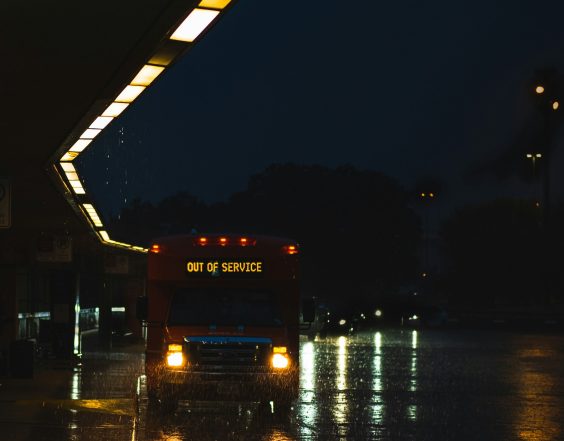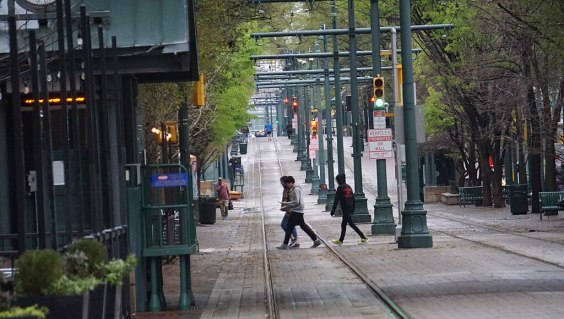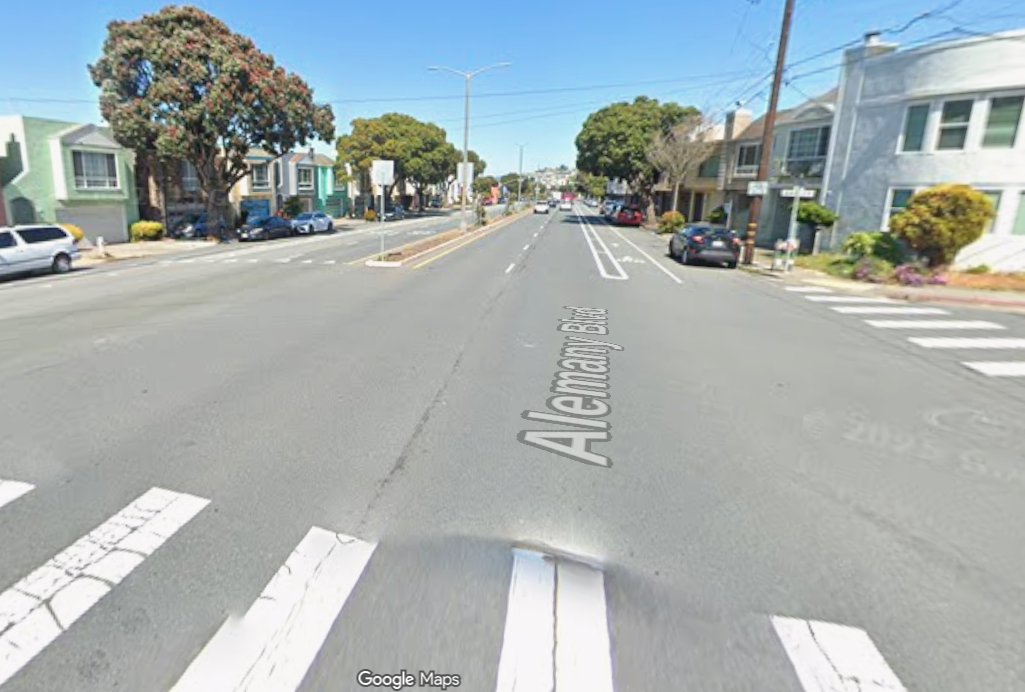 A typical greenstreet facility in Portland, Oregon. This one compines a stormwater treatment facility with a bulbout to reduce pedestrian crossing distances. Photos: Portland BES.
A typical greenstreet facility in Portland, Oregon. This one compines a stormwater treatment facility with a bulbout to reduce pedestrian crossing distances. Photos: Portland BES.When Streetsblog San Francisco took part in the Congress for the New Urbanism's Project for Transportation Reform in Portland last week, city planners and transportation engineers treated participants to numerous tours of innovative network solutions that city has embraced, including its greenstreets program for stormwater treatment on street rights-of-way. With nearly five hundred greenstreet facilities already in the ground, Portland has plans to add another five hundred in the next five years, greatly reducing the burden stormwater can place on its sanitation system.
Portland's greenstreet facilities often take up multiple on-street parking stalls and replace the asphalt with beds planted in native species that help absorb significant volumes of streetlevel wastewater, near 100 percent in some locations. Facilities include swales, curb extensions, planters, and infiltration basins, and are typically linear and pool 6 to 9 inches deep [PDF].
David Elkin, a Landscape Architect working for Portland's Bureau of Environmental Services (BES), explained on the tour that the first experiments with greenstreet facilities in Portland were necessitated because the city had to meet mandates in a Clean Water Act lawsuit for polluting the Willamette River, which flows through Portland. The city faced the challenge of increasing the number drainage pipes in east Portland, at a cost of $150 million, or develop another solution for reducing "upstream" water volumes, those that came from surface streets. By adding the greenstreet facility network, which initially cost $11 million, the city met its target stormwater capture and estimated that it saved $60 million in pipe replacement costs.
"We can talk about all the multiple benefits that greenstreet facilities provide, but the bottom line is it saves taxpayers dollars," said Elkin, noting that the first on-street facility was installed in 2002. "Instead of just a patch or trench in somebody's street, we're going to leave behind a green, vegetated facility."
 The holy trinity of intersection design: a combination of greenstreet facility, painted bicycle lane and bike box, and pedestrian bulbout.
The holy trinity of intersection design: a combination of greenstreet facility, painted bicycle lane and bike box, and pedestrian bulbout. Elkin described the extensive outreach the BES conducted in conjunction with the city's Department of Transportation (DOT) to explain the benefits of the system to Portland residents. He said a particular sticking point was the removal of parking spaces--some facilities required removing up to five spaces. When the engineers talked vaguely about the importance of reducing upstream volumes, they met with relatively little interest from the public, according to Elkin. When they spoke about cleaning up the Willamette and protecting the water supply, they received resounding support, including several ballot measures re-affirming the public's trust in the initiative.
The coordination between city agencies was so thorough, when the DOT reviewed its program for Safe Routes for School treatments, it asked BES to determine where it could match stormwater facilities and pool resources to reduce the costs of doing both. Elkin explained that the two agencies routinely build five facilities together each year.
Mike Faha, co-leader of the CNU tour and Principal of Greenworks, P.C., said, "Only in the last few years have public agencies locally figured out they have the responsibility to [treat stormwater run-off] for public right of ways--obviously that's a good source of pollution out there with vehicular traffic. The public sector has come to the plate and they're starting to adopt greenstreet standards."
Faha admitted they had made mistakes in planning earlier facilities ("There are stormwater facilities that are sitting high and dry because the inflow was not designed properly"), but that the city was willing to admit those mistakes and improve upon them.
Understanding pedestrian access and safety and coordination with bicycle infrastructure were two of their current priorities. "We've gone through an evolution in our thinking - how do you not create conflicts with vehicles, how do you plant it in such a way that it doesn't block vision from vehicles [at] crosswalks. The big issues are pedestrian safety, maintenance, and the types of plants you use."
As though on cue, a planner from Ohio asked Faha and Elkin if they only used native plants, what he described as unsophisticated and "country," which brought loud protest from a Portlander who volunteered with a local planting group to be sure the city used as many natives as possible (a first-ever New-Urbanism brawl between the plant people was narrowly averted).
Faha conceded that these issues tended to draw some of the most vehement concern from the public, though it was clear to all participants that our two guides relished the fact that these minor qualms were the worst of it. Said Faha: "We're figuring it out and I think the city of Portland has some pretty good design standards for greenstreet facilities."
 This facility treats the cascade that used to come off Mt. Tabor during a strong storm. It also rationalized a difficult intersection and shortened pedestrian crossing distance by more than 50 feet.
This facility treats the cascade that used to come off Mt. Tabor during a strong storm. It also rationalized a difficult intersection and shortened pedestrian crossing distance by more than 50 feet. This facility combines pedestrian, bicycle and stormwater facilities, with a unique twist. This is one of the first advance bicycle stop bars in Portland, where cyclists (lower right of picture) yield when pedestrians are present, but then move forward to the stop bar to gain a view of perpendicular traffic.
This facility combines pedestrian, bicycle and stormwater facilities, with a unique twist. This is one of the first advance bicycle stop bars in Portland, where cyclists (lower right of picture) yield when pedestrians are present, but then move forward to the stop bar to gain a view of perpendicular traffic. Before the greenstreet treatment, this was an asphalt parking lot that routinely flooded.
Before the greenstreet treatment, this was an asphalt parking lot that routinely flooded.




